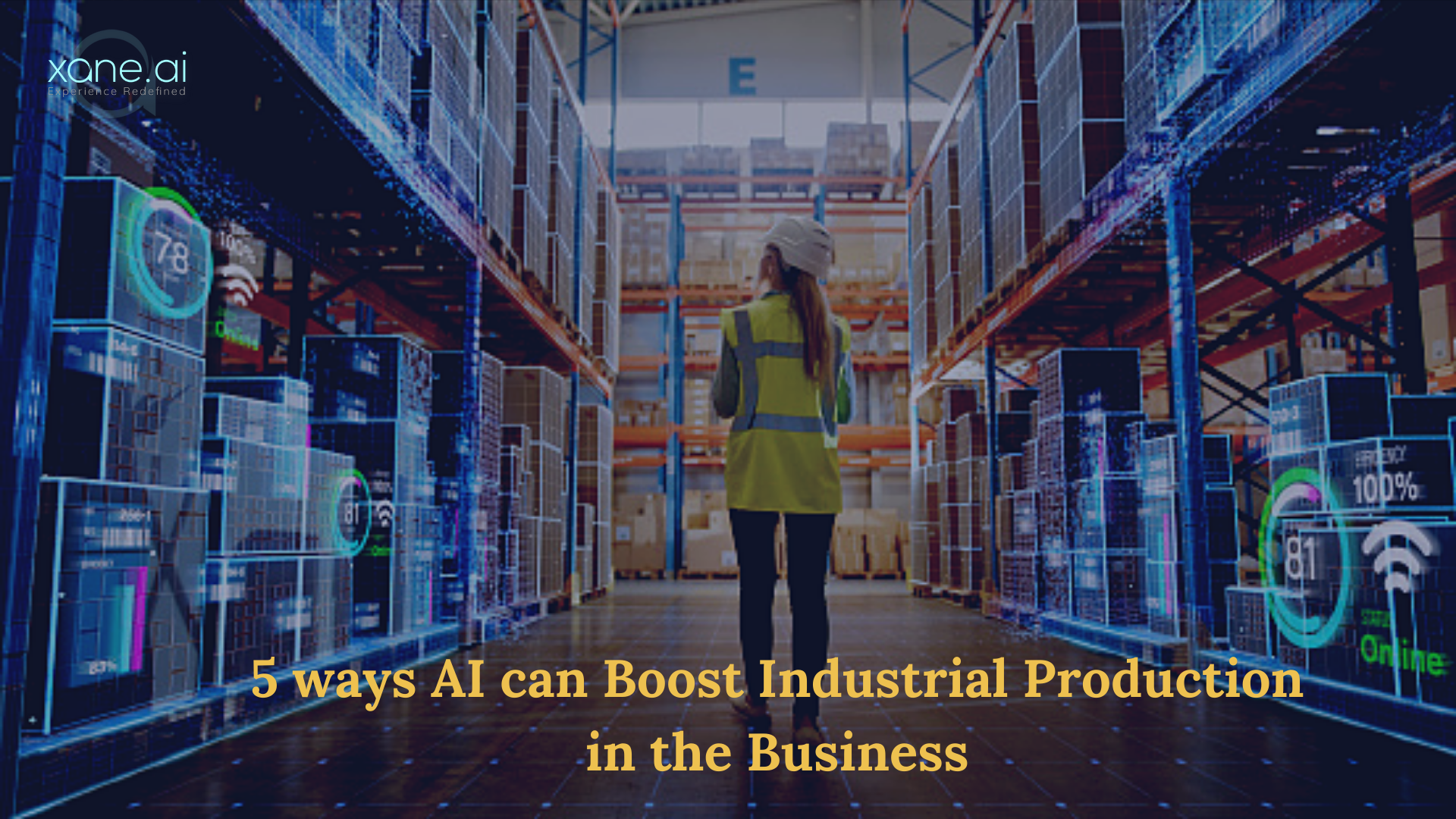
28 Apr 5 ways AI can Boost Industrial Production in the Business
Blog by Oluwasegun Oke
The advent of Artificial intelligence and machine learning has greatly influenced the scalability of supply chains across manufacturing industries, through adopting transitional frameworks and implementations, using algorithms from mostly big data to initiate, and Fastrack revolutionary transformations at such worksites. Being a concept that incorporates AI-driven tools used by renowned assembly plants of manufacturing industries, with strong self-analytic capabilities, inbuilt problem-detecting sequences, and replaceable solution technologies.
These consistently address major issues facing today’s production assemblies, looking to cut down losses, avoid downtime, improve product quality, and safeguard ongoing optimized processing capacity, on the global scale, to generate greater income and produce better-streamlined algorithm models.
Additionally, studies have shown that data-powered onsite operations can be tremendously accelerated and improved, building improved supply chains, through personalized products, as demanded by most of today’s customers, who are willing to pay more for customized items. Besides, given such tremendous potential of this predictive AI-inspired technology to reach the global market value of up to $650 billion, in a matter of six years. It then absolutely becomes pertinent for small and medium-sized enterprises, to proactively outsource capital, and discover their potential, for exponential growth.
With this in mind, I will highlight and expatiate on five ways artificial intelligence has since its inception been engineered and smartly applied by manufacturing industries, to speed up operations, add value to both products and machinery, attain high-quality standards, and compete favorably, by arriving at innovative crossroads, and converging from time to time, to interact, both virtually and in-person, on the best way forward.
Predictive Output
An ever escalated concept that may result in lengthy-time wastage, and low-quality output. And this often arises due to critical flaws, which should be corrected by conducting rigorous plant assembly line assessments, achievable by qualified engineers. And it’s measured based on customers’ demands and applied performance status of machinery, to possess up-to-date components, seamlessly connected and powered up to preferred degrees of operations, majorly influenced by fluctuations from outside forces, coupled with internally generated techniques and data predictive models, among others, to create an outstandingly developed product.
Additionally, it offers a window of opportunity for all management within any production company to accurately predict possible deviations, based on machine learning-inspired data comparison principles, and algorithms’ interactions, based on previous and subsequent projected budgets and active equipment, for a well-coordinated approach that is better suited for smooth-running operations and optimal profit-making.
Detecting and Upgrading Product Quality Through AI-powered Assessment
Being thrashed down in dark waves of incessant product rejection by keen customers can take its toll on any manufacturer. It, therefore, makes a lot of sense to join the pro league of many data-notified and installed-sensor motivated factory floors, that have gainfully embraced top quality, with no flaws nor incessant complaints from customers. And this fully functional AI and machine learning combined ability to automate the complex yet advanced factory routines, by making use of algorithms, that are able to compare, distinguish, and remove defects from acceptable patterns, and likewise disrupting proceedings to alert site managers. Thereby safeguarding the overall interest of such group of individuals, to attain or overshoot industry standards, for a better return on investment.
Besides, such onsite adored and installed tools, allow for constant monitoring and scanning of daily product-integration processes, with insightful collections of information on loopholes, extracted from cloud data. This wealth of knowledge, in being able to digitally self-evaluate products undergoing production and machinery flaws, sustain the quality of your seasonal output, and promote continual and successful product sales, with zero disruptions.
Predictive Maintenance
This is a critical inclusion, often conducted at assembly lines, by having at disposals, accurate metrics, outlining in detail future equipment challenges, with respect to gridlines’ components, collating needed information from cloud data, extracted onsite by correctly positioned cloud sensors, able to monitor and sense decisively, physically untraceable minor inconsistencies, of which may later degenerate into bigger faults, if not maintained, leading to loss of invested capital, and much-needed manhours, around such facilities.
And this further gives credence to the power of predictive installations, the ability to forecast accurately, possible hidden cracks, including electronics installations, not working at full capacity, by scanning such industrial layouts and recommending maintenance accordingly, to avoid coming apart of frameworks, in the nearest future.
Predicting Effective Market Demands
Creating room for learning capabilities and combining teamwork efforts, to obtain a statistically generated pool of data, can take days to validate and establish. However, machine learning makes it possible to channel an unstructured pool of the dataset, into a central dashboard, often belonging to banks, insurance, and other commercial entities, for the thorough and robust transformation, leading to obtaining well defined and structured dataset, which can interact through algorithms and learn a wide range of information, about patterns, including programmable theories and personalized models about their disciplines.
It invariably creates a machine learning software interface, able to respond and retrieve organized information, coupled with providing accurately memorized solutions about future events – usually in business. For instance, next year’s most desirable automobile stocks, to invest in, can be quickly and accurately generated by such software interphases. And this intelligence comes about, and it’s collated, as the algorithms compare and contrast previous sequences of patterns for the best automobile stocks, with current trends in focus. Other factors that play a major role are terms, agreements, and other essential parameters, in relation to the values of the most profitable stock, which it measures to put forward accurate responses to your queries.
Inventory Management
Piles of increasing inventories at big warehouses could take considerable time and effort to count manually and put into records. However, the application of machine learning and AI is critical to achieving the earliest dispatching of inventories, in an exceedingly timely manner. Also, AI-inspired software can easily be applied to store records of overall inventories, including updating added or removed items, and other upcoming management decisions, which may be influenced based on market forces, and regional regulatory bodies.






